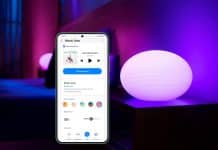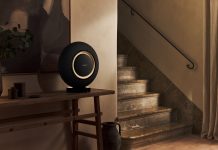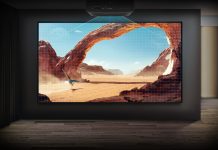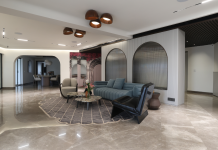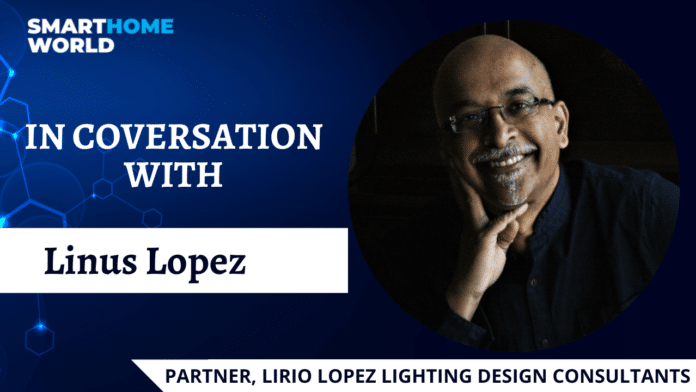
Lirio Lopez Lighting Design Consultants is one of the most reputed companies in the industry. Can you take our readers through your journey so far…
The firm was founded in 1960 by Mr. Lirio Lopez as an electrical consultancy practice, one of the first private independent consultancy firms at that time. Thanks to the encouragement and patronage of Architect A.P. Kanvinde, the practice grew over time. The firm was involved with many of the key post-modern institutional buildings of India in the 60s and 70s. There were many experiences that lead to the development and learning on both the technical and administrative fronts. In the 80s the firm was bolstered when Lyle joined as a partner after his engineering and 10 odd years of experience executing electrical contracts. I joined in ’91 after completing my engineering in Electronics and Communication and extended the consultancy services to other “wired” services in the burgeoning digital and electronic security realms.

India in the 90s had a lot of projects in which the services of foreign architectural lighting designers were contracted, and we had to integrate their designs into our services scope of design. It was a wonderful experience working alongside lighting designers Tino Kwan and Bo Steiber and some amazing interior designers and architects from Europe and South East Asia. We were then fortunate to get awarded the project of lighting Pablo Picasso’s paintings that were to be displayed in Delhi and Mumbai. That interaction of light and art was the trigger to explore lighting design as a profession. Our first Lighting Design project was Geoffrey’s Pub in Ansal Plaza in 2000 and there has been no going back since then! I chose to do a Masters in Architectural Lighting Design from Wismar, Germany, to learn more globally to apply locally and since 2000 we have successfully completed over 250 lighting design projects in almost every state in India and a few countries abroad across a variety of building typologies.
Can you mention some of the landmark projects you worked on, which have been a turning point in your career in terms of experimenting with new lighting techniques/designs or introducing innovative concepts?
There have been many projects that yielded rich learning curves and that’s what has driven our interest in pursuing lighting design despite the odds! In early 2001 we implemented a “dynamic rainbow” across the ceiling of a fine dining restaurant in Delhi using Colour Kinetics RGB LED and an addressable control system from Leax. We convinced a popular jewellery chain to use multi-point, high CRI LEDs to light their silver and gold ornaments in 2004 (they still follow our specifications to light their stores today!). Lighting the largest free-standing bamboo structure for the India Pavilion at the Shanghai Expo in 2010 was both challenging and rewarding. However, increasingly over the recent years, we have looked beyond technology into aspects of human perception and sustainability delving into the role that context plays in design and how to work more with shadow and darkness.

Sir, you are a member of IALD and you have also presented many case papers at international summits. What are your views on the importance of Lighting Design in a project?
It is important. Extremely important! But one has to be careful to debunk a lot of marketing “research” to get to the core of understanding the role of natural or artificial light in the built environment. To begin with, we must acknowledge that good design is centered around humans but as part of a larger eco-system involving all the other inhabitants of this beautiful planet. We must then understand that as humans we have been ”designed” to work with the Sun as our primary source of light and energy and as we move indoors for longer spans of time in a normal working day, our artificially lit interior places need to be carefully planned to minimize the detrimental effects of the differences in energy spectrum and colour rendering while also ensuring that we use products with low embodied energy and properties that support a circular economy. At night the strategies to light our cities and habitations should focus on allowing a proper period of rest for all the planet’s inhabitants while still allowing people to congregate, communicate and celebrate life. As lighting designers, we are responsible for understanding all these requirements and then balancing the science of light sources, their control, and understanding how they affect us while creating spaces that are still attractive, memorable and safe. We have to work closely with other design stakeholders – architects, interior designers, landscape architects, engineers and clients – to integrate these critical aspects of lighting design seamlessly into the built form.

What is the biggest innovation in the lighting sector? How has it revolutionized the entire industry?
LED as a source of light has definitely caused the biggest change. Starting with their performance efficiencies which have led to significantly lower energy requirements for lighting, their small form factor and very fast switching have changed the way we design spaces, while their integrated electronics allow easier use of colour. These properties have ensured that LEDs have rapidly replaced the traditional light sources – incandescent, fluorescent, and halides – in almost all sectors. However, there are still technical and functional issues that must be addressed and improved in the future e.g. colour consistency, thermal management, and delivering a full spectrum of light.
As a Lighting Designer, which lighting control brands do you prefer?
The selection of lighting controls depends on a lot of things today. The keypads, with their choices of material and variety of aesthetic or ergonomic designs, and choices of wired and wireless controls all play a significant role in selection. Technical compatibility across a range of drivers and control protocols is another key decider. Sometimes it is essential to integrate products with good retrofit solutions. Budget is always a key decider and very often the clients themselves have their preferences based on past experiences.

So, depending on the importance given to these various factors, we have used a variety of lighting control brands for different projects – Lutron, Dynalite (Signify), Rako and Zen Control being the most common selection.
What are your views on the Smart lighting industry? According to you, in which sector (hospitality, commercial, residential), is traditional lighting getting rapidly replaced by smart lighting? How do you foresee the Smart Lighting Industry 5 years down the line?
Well for one, it needs a better definition! “Smart” has come to mean a lot of things, but unfortunately, we end up doing a lot of dumb things initially thinking that they are smart! Good quality products that can be sensibly controlled are a definite need. However, the first aspect that needs addressing would be the user interface and we must first clearly understand the types of users and the desired user experience and design interfaces to meet these requirements in the simplest possible way. Typically, people want less complicated gadgets, simple to set up as well as to use. Secondly, we need to have product lines that can be smoothly integrated from the point of control right up to the light source. This necessitates “smart” coordination between the various manufacturers of individual components – the luminaire, the driver, the controller, and the user interface. Thirdly, with rapid technology changes, the system should be such that it is easily upgradable without having to change hardware components or wiring.

I think all sectors benefit from sensibly designed automation systems for a variety of reasons. The benefits for hospitality and residential sectors are flexibility in operation, and modulation of the space with different pre-set light scenes that create unique, memorable user experiences. In commercial spaces, the benefits of energy conservation and feedback for maintenance are key benefits.
I believe constant innovation and user focussed product developments augur well for the future of sensible lighting automation.
Human Centric Lighting (HCL) is a futuristic trend in the lighting industry with health and mental wellness being the top benefits. What are your views on the same?
For a species that depends so much on light, we have compromised our physiological needs a lot in our bid to be more “productive”. We need to spread awareness and integrate ideas from properly researched studies that allow us to improve our health and wellness. We have only recently begun to understand the impact of various spectra of light on the functioning of our bodies. These findings coupled with other equally important parameters, for example, the selection of foods we consume or exercise regimens we follow, have proven benefits in healthier bodies and minds.

When designing our buildings, the integration of daylight and views into the external environments is critical. For spaces that require to be artificially lit we should involve our clients in design decisions about dynamic control of light while also ensuring a proper spectrum of light, good colour rendering, and sensible controls that allow flexibility without being too complicated. More than anything else, a clear understanding of the people that use the spaces we design and their requirements and designing holistically with the other design stakeholders to meet those requirements would be the best trend to adopt.
As the smart lighting market is fragmented into various segments – such as type, applications, end-users, and distribution channel, how does Lirio Lopez Lighting Design Consultants provide the best lighting solutions which suit consumer needs?
As described above, we believe the first step in a good design practice is understanding one’s clients and their needs. Those requirements then need to feature in the design dialogue with the architects or other designers. Being aware of the technology and being familiar with the products that are available to meet those needs must be part of the daily process of research. We believe technology should not be the primary driver in design solutions but the base layer from which we pick according to need. We encourage design debates in our design process and constantly invite manufacturers to present new products to the team. Site progress reviews and trouble-shooting experiences are shared so that the learning is accelerated. We firmly believe that our profession needs constant learning and each project is a treasure trove of learning and deploying knowledge.

How important is collaboration with a system integrator while doing a lighting project?
Extremely important! In the construction world of today working seamlessly together as a team across design and execution is key to delivering a good project. Working with professional, knowledgeable system integrators that run their practices with integrity cannot be underestimated.



